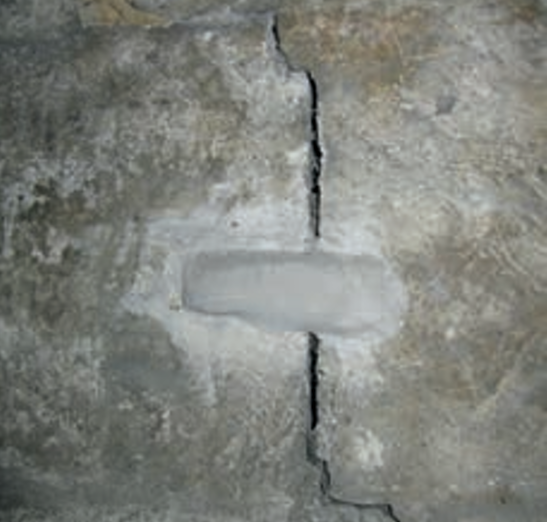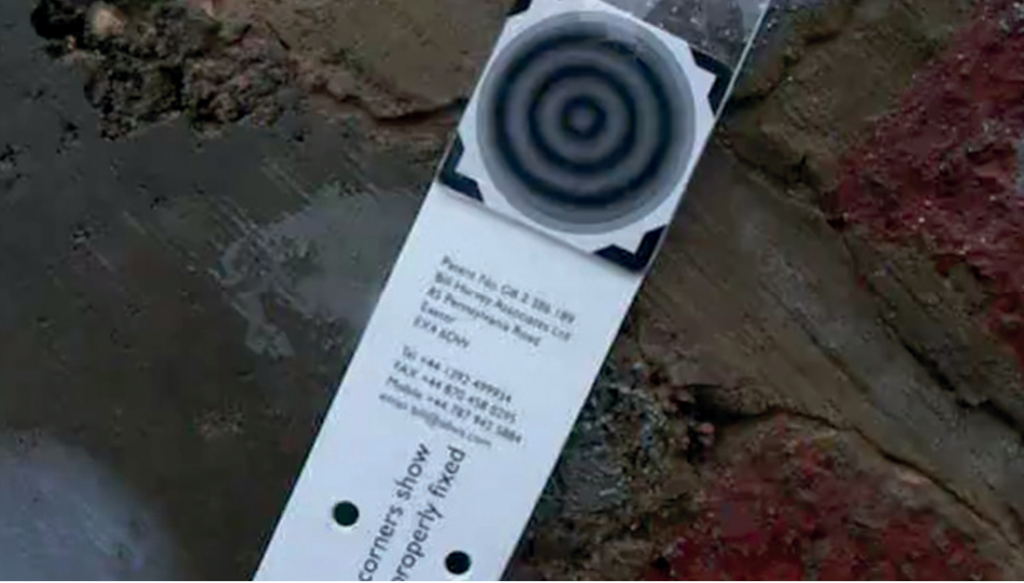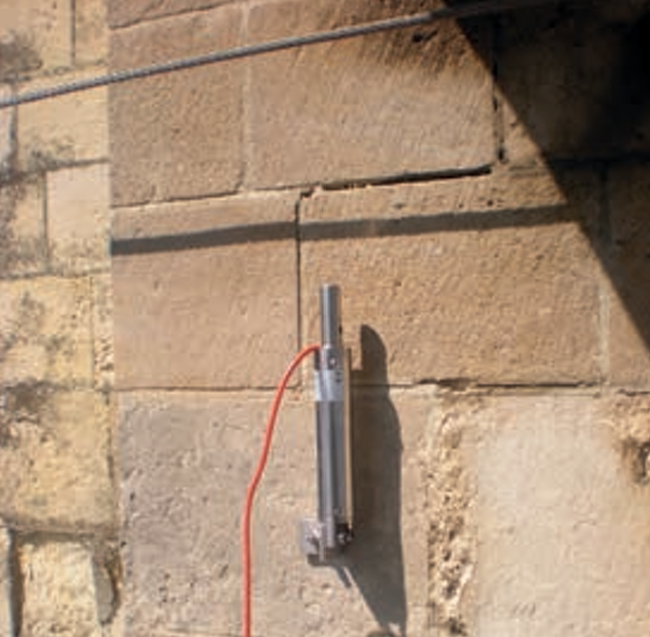This article introduces engineers to the various techniques available to monitor movement in historic structures.

Historic buildings and structures form a significant part of human cultural heritage. These buildings, often centuries old, were built using traditional techniques and materials that differ greatly from modern construction methods (See featured image). The uniqueness of these buildings is part of what makes them valuable, but it also means they require specialized care and maintenance.
A building is considered historic when it holds cultural, architectural, or historical significance. This could include landmarks, old cathedrals, castles, or even private homes that contribute to our understanding of the past. Protecting these buildings requires careful attention, particularly in monitoring any movement or shifts in their structure.
Movement in historic buildings can arise from various factors such as thermal effects, moisture changes in the fabric, or environmental influences like wind and soil shifts. Thus, monitoring this movement is essential for conservation engineers to determine whether the movement is progressive and poses a risk to the building’s integrity. The techniques used for monitoring have evolved over time, from manual methods to sophisticated electronic systems, and are crucial for the preservation of these structures.
Causes of Movement in Old Structures
All structures, regardless of their age, are subject to movement. Modern construction methods account for this by incorporating movement joints and bearings, allowing the building to flex and adapt to minor shifts. Historic buildings, however, are often constructed from more flexible materials like stone, timber, and lime-based mortars, which enable them to cope better with environmental movements.
Nevertheless, even historic structures are not immune to movement-related problems. Shifts in these buildings can arise from a range of factors. Thermal expansion and contraction, for instance, can cause materials like brick and stone to shift. Moisture also plays a key role, particularly in masonry buildings where changing humidity levels can affect the structural fabric. Changes in the subsoil due to load pressures, seasonal fluctuations in the water table, and environmental forces like wind or vibrations also contribute to structural movement.
The main challenge for conservation engineers is determining whether the movement is historic or progressive. Many historic buildings exhibit signs of past movement—such as cracks—that have stabilized over time. These types of cracks do not usually pose an immediate risk. However, active movement needs to be closely monitored to ensure it does not compromise the building’s stability.
Determining if Movement is Structural and Progressive
One of the primary tasks is to identify whether the movement observed in a historic building is ongoing or has reached equilibrium. Ongoing, or progressive, movement is a serious concern, as it could lead to structural failure if left unaddressed. Engineers need to determine whether a building is at risk by assessing whether the movement is new or an older, stabilized occurrence.
Many older buildings show signs of past movement that have long since stopped, with the structure having reached a state of balance. Cracks or shifts might not widen, and the building may remain stable despite its visible flaws. Engineers often refer to this as ‘reading the building.’ For instance, finishes applied over past cracks that remain unbroken are a good indication that the movement has ceased.
If engineers cannot conclusively determine whether the movement is new or old, monitoring provides the most reliable way to track changes. By employing different monitoring techniques depending on the nature of the movement and the resources available, engineers can assess whether the structure is still shifting. This allows implementation of corrective measures in a timely manner.
Basic Monitoring Techniques
Monitoring movement in historic buildings is not a modern practice—it has been done for centuries. While simple methods may not be as common today, they are still valuable for understanding a building’s movement history and can be employed when more sophisticated tools are unnecessary or unavailable.
One of the simplest techniques is to fill cracks with mortar or plaster repairs. This provides a fixed reference point in time, allowing future inspections to determine if the crack has reopened. Another basic method involves marking the wall on either side of a crack and measuring the distance between the marks over time. While not the most accurate method, it can reveal whether significant movement has occurred.

Another traditional approach involves using mortar dabs (Figure 1), where a small dab of mortar is applied across a crack, often with a date inscribed. This allows engineers to see if the crack has widened over time. For example, a mortar dab found in a London building dating back to 1908 indicated that no movement had occurred in that spot for over 100 years.
In cases where beams are pulling away from joints or brick walls are separating, engineers may paint a thin line around the separating area to detect further movement. This method, though simple, provides a clear indication of whether structural elements are continuing to shift.
Recording and Frequency of Manual Monitoring
Manual readings are typically taken at regular intervals, with monthly inspections being a common practice. If more frequent readings are needed, they can be scheduled accordingly. Often, non-professionals who are regularly on-site, such as caretakers or custodians, are trained to take these manual readings, reducing costs while ensuring regular monitoring.
In projects involving insurance claims or disputes, engineers recommend monitoring movement for 12 to 18 months. This period allows engineers to observe any seasonal cycles that might influence the building’s movement. Accurate date recording is essential during manual monitoring, ensuring that future engineers can trace the building’s movement history from the start of the monitoring period.
Using Studs for Accurate Measurements
For more precise monitoring, engineers often use small metal discs called studs. These studs, typically placed on either side of a crack, are measured with a Vernier gauge, allowing for much greater accuracy than manual techniques. Studs can measure movements within an accuracy of ±0.1mm, making them ideal for detecting even minor shifts.
In cases of vertical or diagonal cracks, engineers use two or three studs to better assess the movement’s direction. Consistency in how the measurements is taken is crucial to ensure accuracy. This method is particularly effective for long-term monitoring, helping engineers track changes over time and better understand the building’s movement patterns.
Monitoring Crack Shifts with Tell-tales
Tell-tales are simple but effective tools used to monitor the movement of cracks in buildings (Figure 2). They are often fixed across a crack and provide visual indications of movement along one or two axes. Early tell-tales were made of glass or metal plates fixed across cracks, but modern versions incorporate graduated scales that offer more precise measurements.

Plastic tell-tales, which are commonly available, consist of two halves with a graduated scale and a cross-hair that allows engineers to monitor both horizontal and vertical movements. These devices are highly useful for tracking the direction of movement in a structure and provide more detailed information about how cracks develop.
One of the more advanced tell-tale devices is the Moiré tell-tale (Figure 2). This device uses a series of circular patterns to measure movements as small as 0.1mm. Engineers often use Moiré tell-tales in hard-to-reach areas because they can be read from a distance using binoculars, making them ideal for monitoring cracks high up in tall buildings.
Assessing Verticality with Laser Scanning
Monitoring the vertical alignment of tall historic structures is critical for detecting foundation movements. Engineers use level monitoring to track shifts in a building’s foundation, ensuring that it remains stable. Depending on the equipment used, level monitoring can achieve accuracy within ±0.3mm. Engineers often use a stable reference point, such as an independent datum rod, to anchor these measurements.
Laser scanning is a modern technique that has greatly improved how engineers monitor historic buildings. By capturing large surface areas, laser scanners provide comprehensive data on shifts in verticality and other structural changes. This method is particularly useful when monitoring large structures or buildings undergoing new loads, as it offers a complete view of the structure’s movement.
The accuracy of laser scanning technology has significantly improved over recent years. Previously, scans could achieve ±6mm accuracy over 20m; now, they can reach ±3mm. This improved precision allows engineers to create detailed contour maps that help them visualize the movement patterns and make more informed decisions.
Advanced Remote Monitoring Systems
Remote monitoring systems provide continuous data on the movement of cracks and structural elements, making them essential for modern conservation work. Devices such as strain gauges, crack meters, and tilt meters (Figure 3) automatically record data at regular intervals, sending this information to engineers digitally. Remote systems have reduced the need for frequent site visits while providing highly accurate data.

The main benefit of remote monitoring systems is their ability to record data at frequent intervals, sometimes as often as every hour. This provides engineers with detailed insights into how movement develops over time, allowing for early detection of potential issues. Many of these systems also include automated alerts via email or text when significant movements occur, enabling faster responses.
These systems were successfully used during London’s Crossrail project, where remote monitoring allowed engineers to track structural movement in nearby historic buildings during tunnelling. Remote monitoring systems have also been employed during the construction of The Shard, where engineers monitored the 150-year-old brick arches at London Bridge Station during nearby demolition and construction activities.
Environmental Factors and Structural Movement
Environmental conditions such as temperature, humidity, and seasonal changes can significantly impact structural movement in historic buildings. Engineers must account for these variables when interpreting monitoring data, as seasonal fluctuations may cause minor shifts in materials. For example, temperature changes can cause a building’s materials to expand or contract, which may influence movement readings.
In historic buildings, integrated monitoring systems that track both structural and environmental data provide a more comprehensive view of how these factors interact. For example, engineers have used these systems since the 1970s to monitor timber moisture levels in historic properties like Brighton’s Royal Pavilion, where the threat of rot was a serious concern.
By combining data on environmental factors with structural movement, engineers can better understand the underlying causes of movement and more accurately assess the risks. This approach ensures that engineers can take appropriate steps to preserve the structural integrity of historic buildings.
Conclusion
Effectively managing structural movement in historic buildings is fundamental to their preservation. By understanding the causes of movement and employing a range of monitoring techniques, engineers can protect these culturally and architecturally significant structures from damage.
Sources and Citations
- Morton, E. (2016). The Monitoring of Movement in Historic Buildings and Structures. The Structural Engineer, Conservation Compendium, Part 16. Available at: www.thestructuralengineer.org.
- Gale, J. (2016). Modern Techniques for Monitoring Structural Movement. The Downland Partnership Ltd.